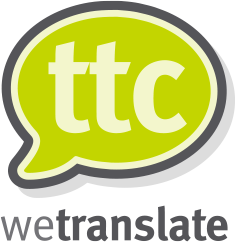
If your business is beginning to spread its wings and explore new territories, you may be considering purchasing translation services to translate your marketing material into other languages. It’s an exciting time, but as with all development, there are costs, and the role of translation should be understood before you jump in.
What is translation services?
Translation services provide an effective solution to communicate the meaning of your message clearly and accurately from a source language to a target language, conveying the original tone and intent, and having a culturally sensitive approach by considering cultural and regional differences.
What needs to be translated?
Firstly, your sales team will need their business cards in both your native language and the language of the country you’re visiting. Some people produce a double-sided card, but if your current business card carries a marketing message on the reverse, it’s worth reproducing this in the new language. A card with material that explains a bit about what your company offers is useful and worth the small additional cost.
Any marketing material or brochures will also need to be translated. However, consider the message you want to give, and ensure that the text is edited rather than sending it in its entirety. For instance, if your company information is focused on being a ‘local partner’ or features specific references that make sense in your country, they may not in a different one.
When you’re producing manuals or information documents, it’s worth exploring them with a professional translator to examine what needs to be translated and what is just background and not necessary in a new environment. An example might be details of the personnel who have been involved in the development of a particular project – most foreign purchasers won’t be interested and it just gets in the way of the information they actually want.
Instructions for any product should be accompanied by clear graphics showing the key elements and, if appropriate, assembly diagrams. This will help to get the message over without misunderstanding.
Dos and Don’ts
Don’t be tempted to use an automated translation tool. There are many online tools, but they’re not intended to be 100% accurate – and they aren’t! Some of the translations that you may have chuckled over from the Far East have almost certainly been the result of this.
‘The small grass is feel ashamed to smile, please don’t bother it.’
Don’t try to do your own translations. It doesn’t matter how fluent in the target language one of your team is, if they’re not a native speaker and not skilled in translation, your reputation could be on the line. Fluency in a language doesn’t necessarily result in perfectly written material.
Do finalise your material before you authorise translation. If you get the translation off the starting blocks before the material has been agreed, it’s going to take longer and be expensive (time is money!)
Do tell your translator how the material they’re translating will be used. The tone and style of a detailed brochure will be different to that of a web page. A tender document section about your products differs from an article for a journal or magazine.
Do choose a translator who is a native speaker of the language they’re translating into. And remember that a Spaniard will write different Spanish to an Argentinian or a Cuban. Make sure your translator is native to the right country!
Do ask for a translator with the right background knowledge. This is especially important if there are technical or legal documents to translate. Conversational fluency doesn’t cover specialist terminology.
Do plan your project. There are many things that you will need to think about, and good translation services will help you to find your way through all the essentials. They should be more than just a translator, but a partner in helping your business to make a successful entry into a new country.

